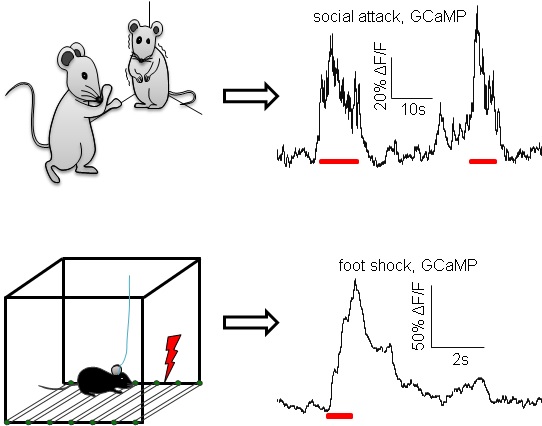Research News
Dr. Minmin Luo’s lab revealed how learning shapes the aversion and reward responses of Lateral Habenula neurons
On May 31 , 2017, Dr. Minmin Luo’s lab published a paper entitled “Learning shapes the aversion and reward responses of Lateral Habenula neurons” in eLife. This study reveals that lateral habenula neurons are activated by broad aversive stimuli and inhibited by rewarding stimuli. Moreover, neuronal responses are dynamically shaped by learning experience.

“Making profits and avoiding loss” is the alpha rule for an organism’s survival. The brain reward circuit has a central role in reinforcing behaviors that are rewarding and preventing behaviors that lead to punishment. As an important node of the brain reward system, the lateral habenula (LHb) in the epithalamus is believed to provide ‘negative motivational value’ to the dopaminergic and serotonergic reward systems. It remains unknown how LHb neurons encode such signals in a freely moving animal and how learning shapes their responses.
The authors of this study used fiber-photometry and electrophysiology to track LHb neuronal activity in freely-behaving mice. Bitterness, pain, and social attack by aggressors intensively excite LHb neurons. Aversive Pavlovian conditioning induces activation by the aversion-predicting cue in merely a few trials. The experience of social defeat also conditions excitatory responses to previously neutral social stimuli. In contrast, sucrose reward inhibits LHb neurons and often produces excitatory rebound. It requires prolonged conditioning and high reward probability to induce inhibition by reward-predicting cues. These results demonstrate that LHb neurons can bidirectionally process a diverse array of aversive and reward signals. Importantly, the responses of LHb neurons are dynamically shaped by learning, suggesting that the LHb participates in experience-dependent selection of behavioral responses to stressors and rewards.
Daqing Wang, a Ph.D. student of NIBS and Tsinghua University, is the first author; Minmin Luo is the corresponding author of this study. Coauthors include Yi Li, Qiru Feng, Qingchun Guo, and Jingfeng Zhou from Luo’s group. The study was funded by MOST, NSFC, and Beijing Municipal Government and carried out in NIBS.



